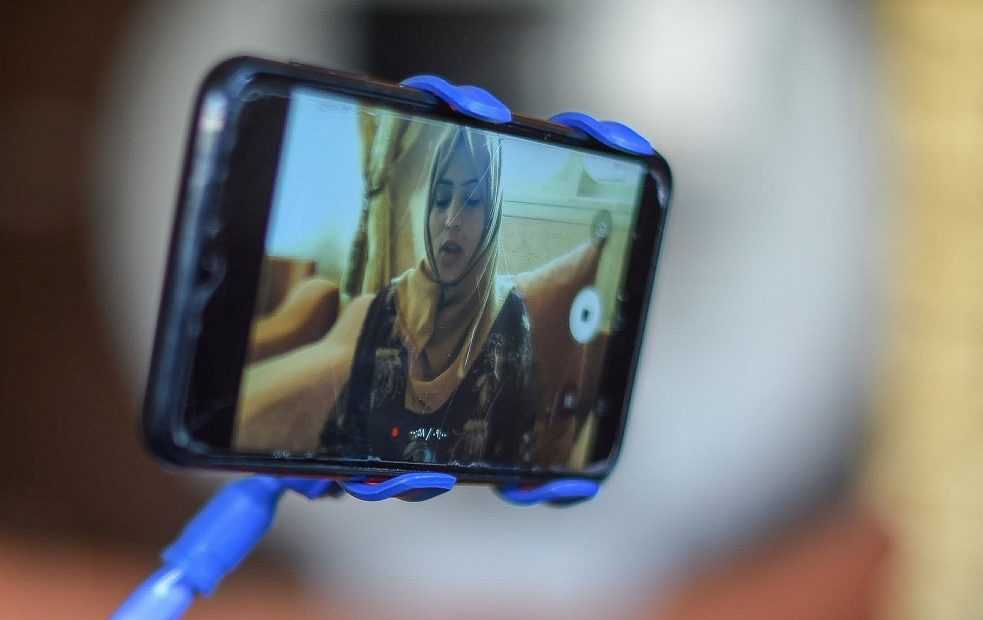For 14 years and counting, life in the Gaza Strip has been affected on multiple, if not all, levels. The overall insufferable situation – armed conflict, continuous escalation and a naval blockade – has severely impacted the education sector in a way that raises many concerns for law faculties and students alike. Now, with an almost unspeakable hardship, the COVID-19 pandemic has further burdened an already fatigued teaching process.
Teaching international humanitarian law (IHL) has special significance in Palestine in general and in the Gaza Strip specifically, due to the unique case of the region and its conflict. Through understanding the law of armed conflict, law professionals and graduates then seek to implement it and raise awareness of its provisions.
Universities and law schools have been keen to develop their curriculums to adopt IHL as a course, with many success stories as a result. Despite daily hardships, there are more law graduates in the Strip than ever before who are focusing their studies and professional work on IHL, and many law scholars are eager to specialize in the subject. Most recently, IHL was added as a law course in the English programme at the University of Palestine. However, this humble progress and momentum has been hindered since the onset of COVID-19.
As in most places across the globe, the pandemic has affected nearly every aspect of life in the Strip. In a desperate attempt to continue teaching, universities relied on remote, online learning as the only option to prevent the collapse of the higher education sector. Many universities had actually used online programming at some point before the pandemic, but it had never served as an actual substitute or even a complement to the traditional approach. At the University of Palestine, for example, we used UPINAR, an online platform to upload lectures and arrange assignments. Despite its potential, however, it was never fully recognized by the faculty or the students. The COVID-19 pandemic has placed these issues and challenges under a microscope, and universities’ online systems and platforms have been put to the test.
Examining the digital challenges
There are three main digital challenges lecturers and students face in the Gaza Strip, all of them related in large part to information and communications technology (ICT).
First, the painstakingly slow internet connection. Learning relies on communication, and for this to succeed, the lecturer needs to connect with his/her students. However, a lot of IHL faculty and students in the Strip do not have access to adequate internet speed to allow them to join online sessions, even basic audio without video. The problem is not even resolved with recorded lectures – which already sacrifices the face-to-face approach to discuss or share thoughts – as it takes an enormous amount of time to upload the recorded lecture on the server or the cloud. Moreover, many students live in neighbourhoods with poor infrastructure, relying on internet packages for a very specific and limited amount of time. Some areas don’t even have this option, so students have to commute to other neighborhoods, risking exposure to COVID-19 and other hazards, to access the internet.
Complicated procedures to administer and correct exams also expose a range of obstacles. It has been difficult for IHL students to complete their examinations for numerous reasons, from weak internet connections to power shortages. Students often stress more about losing the internet than on figuring out the answers to the tests, leading to a situation that feels as though exams are testing the internet rather than the students.
Second, power shortages. With only eight hours of electricity per day, and sometimes even less, Gaza suffers from continuous blackouts. Even with alternative power options, which most citizens lack access to, online and distance learning depends first and foremost on the supply of power. Consequently, as a lecturer, I have been rushed to record and upload lectures and related materials in a limited time, which surely affects the quality of teaching.
At the receiving end, students have been exhausted by a different kind of pressure. They need to download a large amount of recorded information in a very limited time. Barely able to keep track, this raises concerns regarding the quality of learning and understanding the rules of IHL.
Third, many IHL faculty members lack the proper devices to deliver their lectures, even before the pandemic hit. While I was able to use a tablet for better presentations, many other faculty members were not as lucky and have scarce technological resources. Since COVID-19, the level of poverty in the Strip has prevented universities from providing their staff with the proper technological devices for distance learning.
One of my IHL students summarized the situation with a glimpse into the household: ‘My whole family used one and only mobile device during the pandemic for online lectures . . . and my family consist of eight students, four of them in college, and two with a disability.’
Looking ahead for digital solutions
Despite the dire circumstance in the Gaza Strip, the pandemic revisited pre-existing, but under-utilized, models for the educational process. Although many issues still need to be addressed, the experience gained during this challenging period can serve as a blueprint for a better academic approach.
Faculty members and lecturers have been forced to find creative methods for teaching IHL. Once the pandemic is over, traditional methods employed by old-fashioned professors will need to be revisited. Staff and students understand that it is equally important to rely on diverse learning as well as teaching styles in the educational process.
Such improvements could advance research, invest in open discussions and develop interactive lectures in a way that enhances the IHL learning experience in the Gaza Strip. Technology must be integrated into learning methods, for on-site as well as distance learning. In addition to fostering a more successful teaching and learning environment in universities and law schools, this will help other important actors such as the ICRC in their work communicating the provisions of IHL in the Gaza Strip.
See also
- Teaching IHL in Crisis: A Strategic Response for Troubled Times?, British Institute for International and Comparative Law (BIICL), 2021.
- Samer Mousa, Teaching international humanitarian law in the Gaza Strip: A success story amid complexities, March 13, 2019
- Laura K. Taylor, Alexandra Jacobs, Rebuilding peace in divided education systems, January 23, 2020






Thank you Professor Aljaro for sharing you practical constraints and inspiring experience!
At the ICRC, we hope that our digital IHL teaching tools, including offline IHL app, can support your efforts efficiently during the pandemic: https://www.icrc.org/en/what-we-do/building-respect-ihl/education-outreach
In particular, we published this ready-to-use IHL syllabus for remote teaching early this year to preserve interactive and stimulating courses in all circumstances: https://www.icrc.org/en/teaching-ihl-through-digital-resources-syllabus-interactive-remote-teaching
Looking forward to your feedback, we stay of course posted for any question and wish you all the best in your endeavours!
Etienne Kuster
Legal Adviser for relations with academic circles
Advisory Service on International Humanitarian Law, Legal Division
International Committee of the Red Cross (ICRC)
hamas is millionaires. managed to sneak in 5000 missiles so clearly it can get what it wants.. i think its time to spend money on education rather than on terror tunnels.
i mean where does hamas’ billion go?.no one knows. we do know that their leaders lead lavish lives in mansions. and its maliciously curious that the authors have not ONCE mentioned those who govern gaza. ONLY HAMAS GOVERNS GAZA.
Indeed, online schooling has ended up being useful these days. As we are as yet not completely recuperated from Coronavirus numerous establishments have announced that they will give online schooling post Coronavirus too. Truth be told, many have dispatched full-time online courses. I figure we can expect this is our smartest choice for showing with regards to learning at far-off places. We have been effectively showing youthful understudies coding and DIY exercises for the beyond 4 years. Do check out our website and support – https://wizkidsclub.com/
Thanks Sumita- it looks like a very innovative and impactful organization, thanks for sharing!